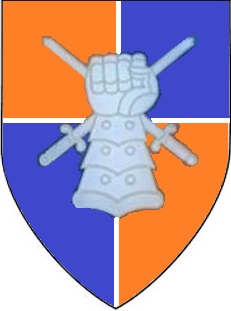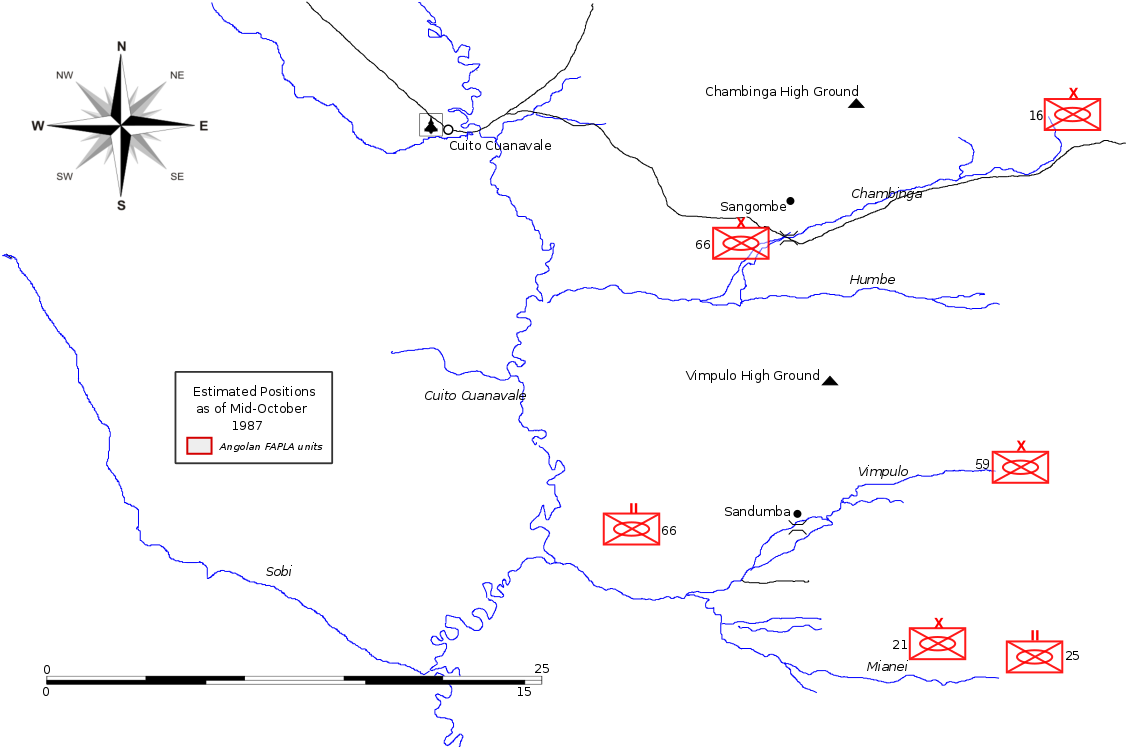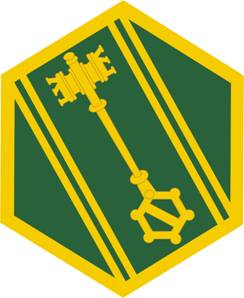|
Regiment Molopo
Regiment Molopo was an armoured regiment of the South African Army. As a reserve unit, it had a status roughly equivalent to that of a British Army Reserve or United States Army National Guard unit. History Origin Regiment Molopo was raised in 1960 as an armoured regiment equipped with armoured cars. In 1986 Regiment Molopo was changed from an armoured car unit to a tank regiment. Border War Regiment Molopo saw active service in the South West Africa/Angola campaign. The regiment participated in Operation Askari and Operation Moduler. It provided elements to combine with Regiment Mooirivier to form a composite unit of Olifant tanks under the command of Task Force Victor. Brigade affiliation Regiment Molopo was affiliated with 73 Motorised Brigade from 1983 until 1991. Disbandment Regiment Molopo closed around 1995 and its memorabilia and colours were transferred to the Pretoria Regiment for safekeeping. Regimental symbols Dress Insignia Unit colours Operations Reg ... [...More Info...] [...Related Items...] OR: [Wikipedia] [Google] [Baidu] |
South African Armoured Corps
The South African Army Armour Formation provides an Armour capability to the South African Army. The Formation came into being as part of a restructure. South African Armour Corps units previously under the command of various different brigades and other formations were all grouped under one formation. All armour is assigned to the SA Army Armour Formation under the charge of a General Officer Commanding. History Armoured Origins South Africa employed armoured cars as early as 1915 during its invasion of the then-German South West Africa (now Namibia). After the end of the First World War a single Medium Mark A Whippet light tank was purchased for the Union Defence Force and was operationally employed during the 1922 Rand revolt. The tank in question is now on display at the Army College at Thaba Tshwane. The formation of an armoured corps was proposed in 1924. An armoured car section was formed the next year when two Vickers machine gun-armed Crossley armoured cars and two m ... [...More Info...] [...Related Items...] OR: [Wikipedia] [Google] [Baidu] |
Army Reserve (United Kingdom)
The Army Reserve is the active-duty volunteer reserve force of the British Army. It is separate from the Regular Reserve whose members are ex-Regular personnel who retain a statutory liability for service. The Army Reserve was known as the Territorial Force from 1908 to 1921, the Territorial Army (TA) from 1921 to 1967, the Territorial and Army Volunteer Reserve (TAVR) from 1967 to 1979, and again the Territorial Army (TA) from 1979 to 2014. The Army Reserve was created as the Territorial Force in 1908 by the Secretary of State for War, Richard Haldane, when the Territorial and Reserve Forces Act 1907 combined the previously civilian-administered Volunteer Force, with the mounted Yeomanry (at the same time the Militia was renamed the Special Reserve). Haldane planned a volunteer "Territorial Force", to provide a second line for the six divisions of the Expeditionary Force which he was establishing as the centerpiece of the Regular Army. The Territorial Force was to be com ... [...More Info...] [...Related Items...] OR: [Wikipedia] [Google] [Baidu] |
Military Units And Formations Established In 1960
A military, also known collectively as armed forces, is a heavily armed, highly organized force primarily intended for warfare. It is typically authorized and maintained by a sovereign state, with its members identifiable by their distinct military uniform. It may consist of one or more military branches such as an army, navy, air force, space force, marines, or coast guard. The main task of the military is usually defined as defence of the state and its interests against external armed threats. In broad usage, the terms ''armed forces'' and ''military'' are often treated as synonymous, although in technical usage a distinction is sometimes made in which a country's armed forces may include both its military and other paramilitary forces. There are various forms of irregular military forces, not belonging to a recognized state; though they share many attributes with regular military forces, they are less often referred to as simply ''military''. A nation's military may f ... [...More Info...] [...Related Items...] OR: [Wikipedia] [Google] [Baidu] |
Armoured Regiments Of South Africa
Armour (British English) or armor (American English; see spelling differences) is a covering used to protect an object, individual, or vehicle from physical injury or damage, especially direct contact weapons or projectiles during combat, or from a potentially dangerous environment or activity (e.g. cycling, construction sites, etc.). Personal armour is used to protect soldiers and war animals. Vehicle armour is used on warships, armoured fighting vehicles, and some mostly ground attack combat aircraft. A second use of the term ''armour'' describes armoured forces, armoured weapons, and their role in combat. After the development of armoured warfare, tanks and mechanised infantry and their combat formations came to be referred to collectively as "armour". Etymology The word "armour" began to appear in the Middle Ages as a derivative of Old French. It is dated from 1297 as a "mail, defensive covering worn in combat". The word originates from the Old French , itself derived ... [...More Info...] [...Related Items...] OR: [Wikipedia] [Google] [Baidu] |
SADF Era Regiment Molopo Insignia Ver 2
The South African Defence Force (SADF) (Afrikaans: ''Suid-Afrikaanse Weermag'') comprised the armed forces of South Africa from 1957 until 1994. Shortly before the state reconstituted itself as a republic in 1961, the former Union Defence Force was officially succeeded by the SADF, which was established by the Defence Act (No. 44) of 1957. The SADF, in turn, was superseded by the South African National Defence Force in 1994. Mission and structure The SADF was organised to perform a dual mission: to counter possible insurgency in all forms, and to maintain a conventional military arm which could defend the republic's borders, making retaliatory strikes as necessary. As the military expanded during the 1970s, the SADF general staff was organised into six sections—finance, intelligence, logistics, operations, personnel, and planning; uniquely, the South African Medical Service (SAMS) was made co-equal with the South African Army, the South African Navy and the South African A ... [...More Info...] [...Related Items...] OR: [Wikipedia] [Google] [Baidu] |
Pretoria Regiment
The Pretoria Armour Regiment (formerly the Pretoria Regiment) is a reserve armoured regiment of the South African Army. History Origin The regiment was formed in Pretoria on 1 July 1913 as the 12th Infantry (Pretoria Regiment) – a unit of the Active Citizen Force – by the amalgamation of several units: the Pretoria Company of the Transvaal Scottish Regiment, Transvaal Scottish, the Central South African Railway Volunteers, the Northern Mounted Rifles and the Pretoria detachment of the Transvaal Cycle and Motor Corps. World War One The Regiment landed from the sea and served in German South West Africa at Aus and Tschaukaib in the south. They were part of the advance on Tsumeb in July 1915. Rand Revolt The regiment prevented a force of armed strikers from damaging the Pretoria-Germiston Railway line in May 1922. Renamed In 1928, it was renamed the Pretoria Regiment. The Royal Colonel On 24 October 1930 it was once again renamed, to the Pretoria Regiment (Princess Alice's ... [...More Info...] [...Related Items...] OR: [Wikipedia] [Google] [Baidu] |
7 South African Infantry Division
7 South African Infantry Division was a formation of the South African Army, active from the 1960s to 1999. History Origin of 7 Division from existing and new Brigades 7 Division and 17, 18 and 19 Brigades were established on 1 April 1965. Difficulties with manning levels saw the disestablishment of 7 Division on 1 November 1967 and its replacement by the Army Task Force (HQ) and 16 Brigade. Re-designated Headquarters On 2 April 1971, a small band of officers (Brigadier Webster, Colonel Klaus Von Lieres, Colonel Hugh Hardingham, Major Barry York, Major Gerrie Moolman, Captain Bertie Suter, and Captain Manus Bothma) were summoned to meet with Major General Stapelberg (Combat General, Witwatersrand Command) to inaugurate the establishment of 7 Division, South African Army. The meeting took place at the headquarters of the Transvaal Irish Regiment in Johannesburg. From 1 September 1972 Army Task Force Headquarters was redesignated HQ 7 Division. Sister Divisions Two years later, ... [...More Info...] [...Related Items...] OR: [Wikipedia] [Google] [Baidu] |
Regiment Mooirivier
The Molapo Armoured Regiment (formerly Regiment Mooirivier) is a reserve armoured regiment of the South African Army. History Origin The regiment was founded in 1941 as 2 Anti Tank Regiment and re-instituted in 1954 by the first vice-rector of the Potchefstroom University, Professor Fanus du Plessis. During 1955 the regiment was converted to an armoured car regiment and renamed Regiment Hendrik Potgieter. In 1959 the Regiment was renamed Regiment Mooirivier. Under the SADF This unit served in South Africa's various internal conflicts as well as during the South African Border War, including duty in South-West Africa and cross-border raids into Angola between 1975 and 1984. The regiment participated in Operations Askari, Modular, Hooper and Packer. The regiment was equipped with Eland 90s at that stage. Divisional affiliation * 8th South African Armoured Division ** 82 Mechanised Brigade Under the SANDF 82 Mechanised Brigade Division was disbanded, and Regiment Mooirivier w ... [...More Info...] [...Related Items...] OR: [Wikipedia] [Google] [Baidu] |
Operation Moduler
Operation Moduler (sometimes incorrectly called "Modular") was a military operation by the South African Defence Force (SADF) during the South African Border War. It formed part of what has come to be called the Battle of Cuito Cuanavale. The Angolan objective was to advance south-east to attack the UNITA (National Union for the Total Independence of Angola) at Mavinga. The SADF objective was to protect UNITA by stopping that advance. The advance was halted with heavy Angolan casualties. The South African forces and its UNITA allies then began offensive operations against the Angolan forces, who had retreated back to a defensive line east of the Cuito River with the objective of destroying them once and for all. Background During January 1987, the Angolans began to increase their air defence network in the Cuito Cuanavale region and by April they had begun to assemble a large force of tanks, APCs, trucks and a large number of helicopters and fighter and strike aircraft at the tow ... [...More Info...] [...Related Items...] OR: [Wikipedia] [Google] [Baidu] |
Operation Askari
Operation Askari was a military operation during 1983 in Angola by the South African Defence Force (SADF) during the South African Border War. Background Operation Askari, launched on 6 December 1983, was the SADF's sixth large-scale cross-border operation into Angola and was intended to disrupt the logistical support and command & control capabilities of People's Liberation Army of Namibia (PLAN) the military wing of the South West Africa People's Organisation SWAPO, in order to suppress a large-scale incursion into South West Africa that was planned for the beginning of 1984. The People's Armed Forces for the Liberation of Angola (FAPLA) of the People's Movement for the Liberation of Angola (MPLA), the Angolan governing party, were targeted during this mission as PLAN bases were close to FAPLA bases and had been used as a place of refuge during SADF operations. Planning Operation Askari was planned to begin on 9 November 1983 but was postponed for one month because the So ... [...More Info...] [...Related Items...] OR: [Wikipedia] [Google] [Baidu] |
Army National Guard
The Army National Guard (ARNG), in conjunction with the Air National Guard, is an organized Militia (United States), militia force and a Reserve components of the United States Armed Forces, federal military reserve force of the United States Army. They are simultaneously part of two different organizations: the Army National Guard of each state, most territories, and the District of Columbia (also referred to as the ''Militia of the United States''), and the Army National Guard of the United States (as part of the federalized National Guard (United States), National Guard). The Army National Guard is divided into subordinate units stationed in each U.S. state and territory, as well as the District of Columbia, operating under their respective governors and governor-equivalents. The foundation for what became the Army National Guard occurred in the city of Salem, Massachusetts, Salem, Massachusetts, in 1636, the first time that a regiment of militia drilled for the common defens ... [...More Info...] [...Related Items...] OR: [Wikipedia] [Google] [Baidu] |


.jpg)





